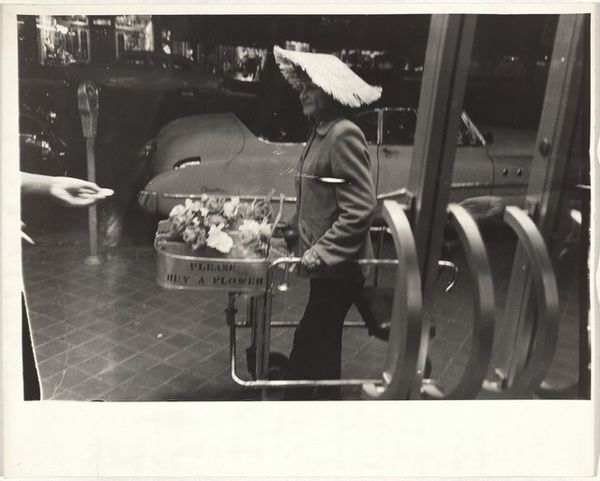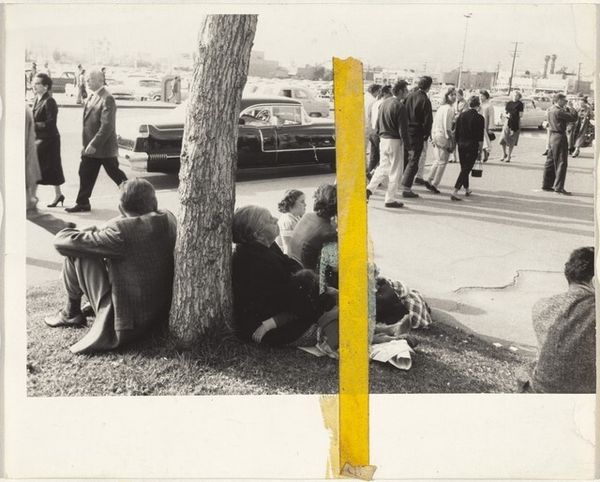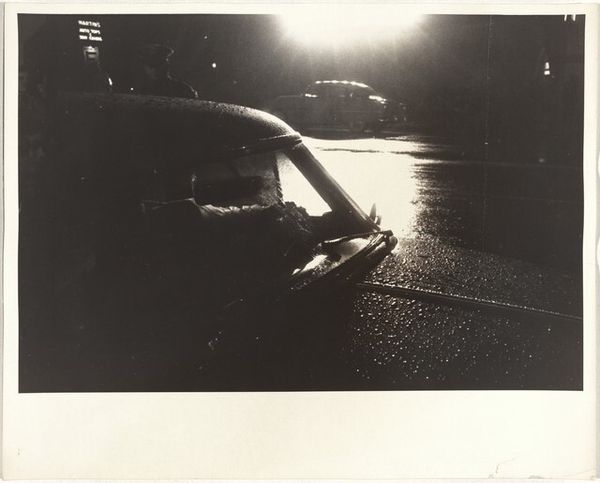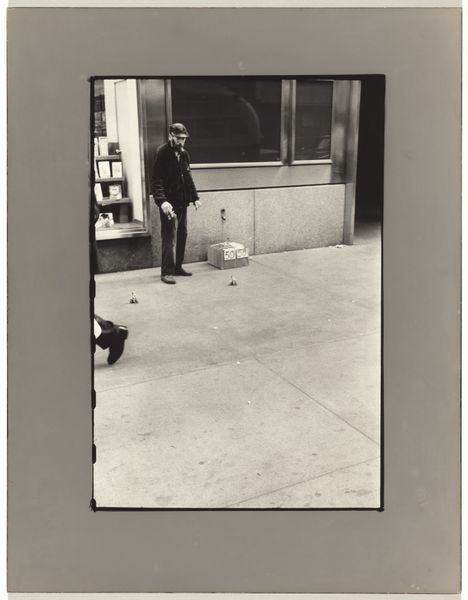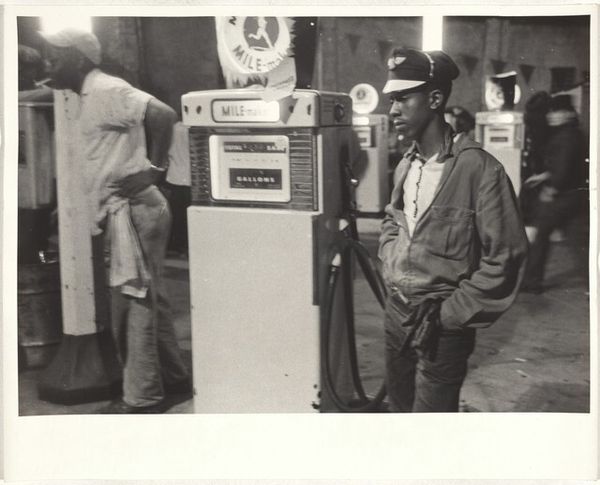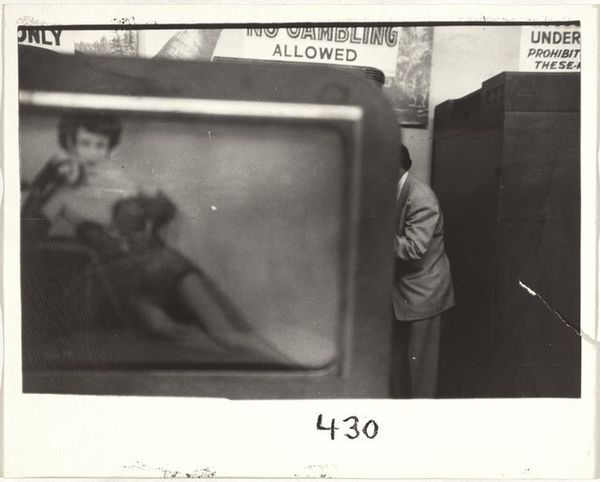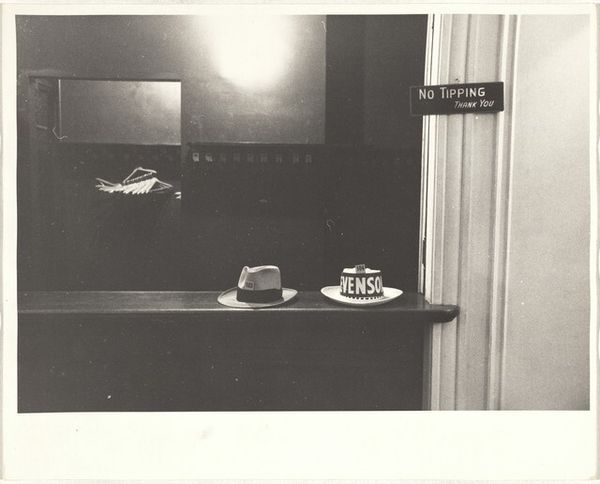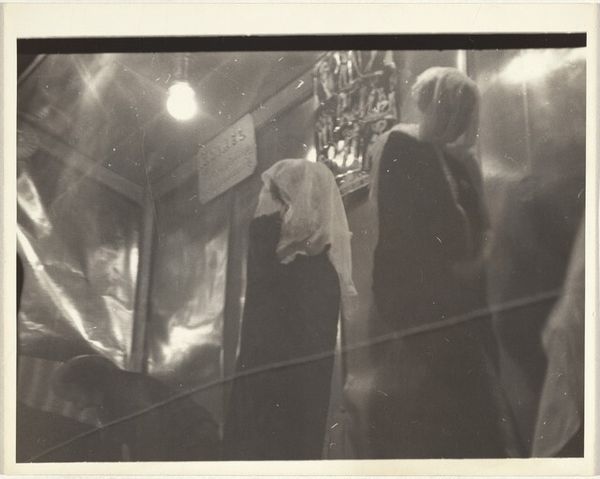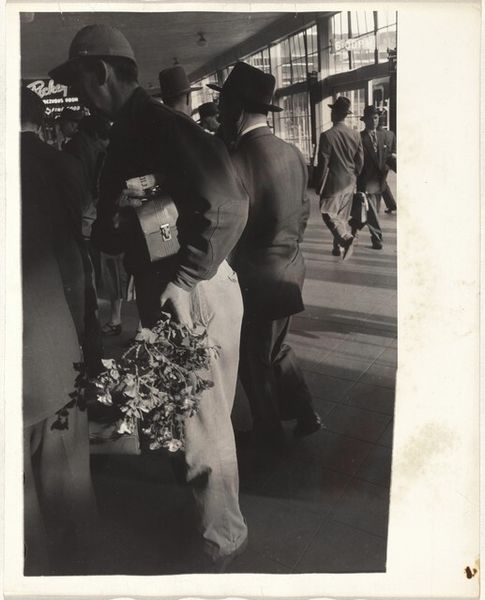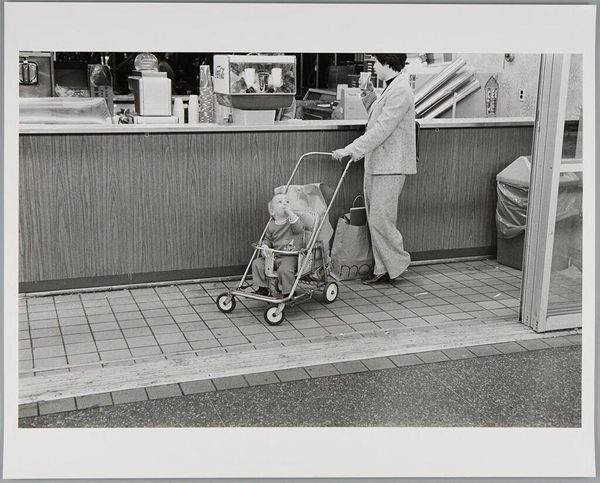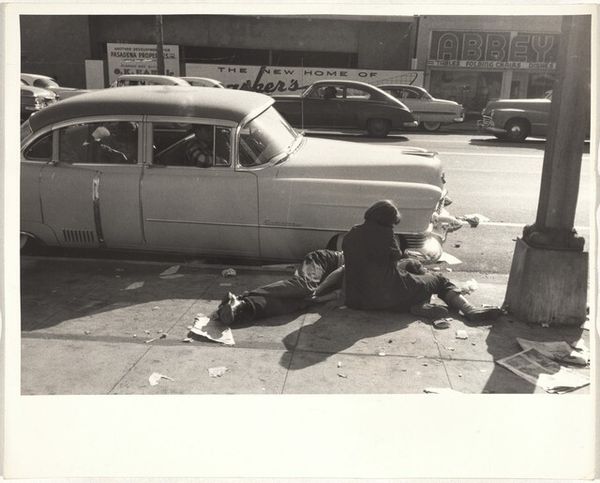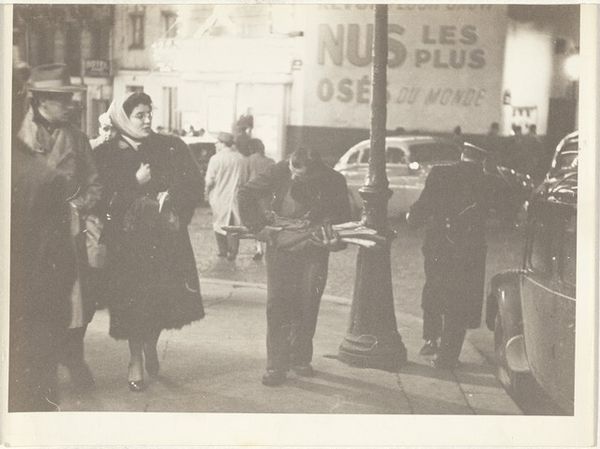
print, photography, gelatin-silver-print
#
black and white photography
# print
#
street-photography
#
photography
#
capitalist-realism
#
gelatin-silver-print
#
realism
Dimensions: image: 32 x 44.1 cm (12 5/8 x 17 3/8 in.) sheet: 43 x 60.7 cm (16 15/16 x 23 7/8 in.)
Copyright: National Gallery of Art: CC0 1.0
Curator: Standing before us is Sigmar Polke's "Cologne Beggars I," a gelatin-silver print from 1972. Its composition, rendered in stark black and white, presents an arresting commentary on social conditions. Editor: Gosh, it’s a really gritty image, isn't it? Stark reality. You can almost feel the cold pavement. The anonymity is pretty palpable, almost menacing, as though everyone is alone in it together. Curator: Indeed. The strategic use of focus and shadow contributes to the creation of distinct pictorial layers. Notice how the blurry figures seem to loom, overshadowing the seated figure who appears very clear and present. This placement affects the viewer's reading, forcing them to focus in a non-standard order. Editor: It makes you want to offer a narrative. Who are those blurry, busy figures, almost on top of him? What's the relationship? You just wanna make up their life stories. You get this almost documentary vibe – bleak, very German. Do you feel that post-war vibe, that almost brutal social realism thing? Curator: The themes present here align perfectly with the critical realism prevalent in post-war German art. By employing the aesthetics of documentary photography, Polke constructs a potent social critique. There are codes here, signifiers relating to visibility and invisibility, almost a social commentary played out in visual language. Editor: It definitely triggers that “us and them” kind of response, you know? The starkness highlights the isolation, doesn't it? Kind of heartbreaking when you stare at the eyes. The texture just sucks you right in and it has that odd immediacy – so old and yet, incredibly relevant to society now, which kinda sucks, I think. Curator: Absolutely. Polke utilizes the formal elements—the contrasting light and shadow, the gritty texture of the print—to evoke not just empathy but also a critical understanding of societal structures and individual isolation within them. Editor: Well, for me it strikes a deeply melancholic note. This whole stark vision is sort of forever captured by its black-and-white silence. It's not a simple thing, but it hits home, deeply and personally.
Comments
No comments
Be the first to comment and join the conversation on the ultimate creative platform.
